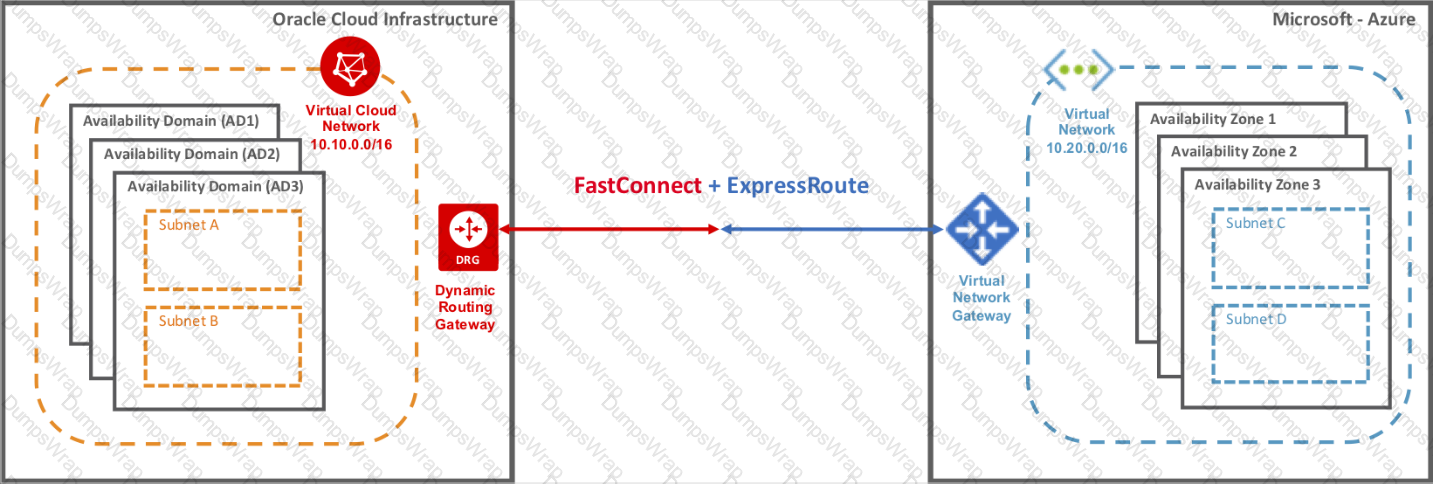Oracle Cloud Infrastructure 2023 Multicloud Architect Associate Questions and Answers
To achieve high availability in a 2-node RAC DB System in Oracle Cloud Infrastructure, what would you use to distribute your nodes to provide database instance fault isolation?
Which is true regarding fully automated and guided onboarding for the OracleDB for Azure ser-vice?
Which components are required to establish a cross-cloud connection between Microsoft Azure and Oracle Cloud Infrastructure?
What is the primary purpose of the MySQL Database Service HeatWave option in Oracle Cloud Infrastructure (OCI)?
What is the purpose of identity federation in the context of OracleDB for Azure?
An organization has decided to implement a multicloud solution by using Microsoft Azure for their frontend data analytics applications and Oracle Cloud Infrastructure (OCI) for their backend Oracle Autonomous Data Warehouse. In this scenario, how can the organization ensure secure and low la-tency data transfer between the frontend applications and the backend data warehouse?
How does Oracle Database Service for Azure simplify cross-cloud deployments for customers?
A company has deployed an application in Oracle Cloud Infrastructure consisting of multiple web servers, database servers, and application servers. The company wants to restrict communication be-tween these components, allowing only the necessary traffic between them. Which OCI feature would be most suitable to achieve this objective?
How does Oracle Database Service for Azure enable bidirectional communication between applica-tions in the Azure tenancy and database resources in OracleDB for Azure?
An organization wants to deploy Oracle Database Service for Azure in the existing Oracle Cloud Infrastructure and Azure tenancies that are in the supported regions. However, they want to have full control over the Azure permissions that should be granted.
Which option should they choose during the sign-up process?
What should you do to prepare your Oracle Cloud Infrastructure (OCI) Virtual Cloud Network (VCN) for potential security risks when connected to a Microsoft Azure VNet?
Which is NOT a security capability available with OracleDB for Azure?

 A screenshot of a computer
Description automatically generated
A screenshot of a computer
Description automatically generated